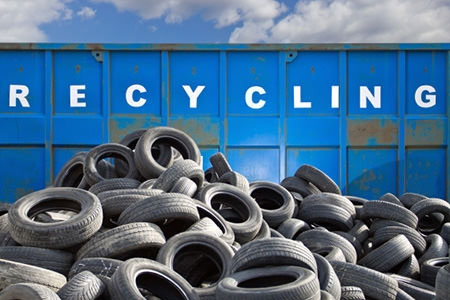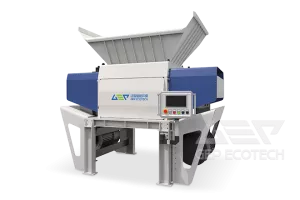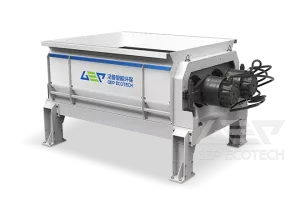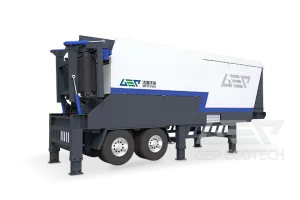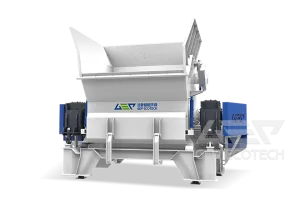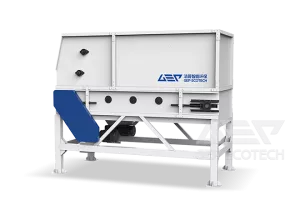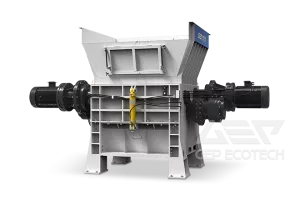GEP Ecotech Co., ltd can help you put in a complete Tire Recycling System. The basic Tire Shredder is designed to cut tires into roughly 2"x2" inch particles for the Tire Derived Fuel (TDF) market. By adding additional conveyors and another shredder we can ruduce these to a finer product ranging from 5/8" to 1" used in application like mulch.
Processing Pointers
Below, we provide a general overview on the process used to make TDF, wire-free chip and crumb rubber as small as 1/4 inch in size.
Step 1 — The Primary Shredder. As of today, approximately 50 percent of recycled tires are used as TDF. TDF is defined as a 2-inch-by-2-inch (sometimes even a 1-inch-by-1-inch) particle that still contains the steel wire. You can make TDF with a single shredder, called a "primary shredder," a vibratory screener and some conveyors.
Whole tires are loaded onto a roller belt conveyor that takes the tires up into the primary shredder. After passing through the primary shredder, the "shreds" fall onto the vibratory screener. Pieces larger than 2 inches by 2 inches are carried onto a "return conveyor" that brings them back to the primary shredder where they are shredded again (and again and again, if necessary) until they are 2 inches by 2 inches or smaller.
The "unders" (the pieces sized 2 inches by 2 inches or smaller) are now TDF and are removed from the vibratory screener via another belt conveyor.
A system like this, laid out in a straight line, would be approximately 80 feet long and about 20 feet wide, at maximum.
A secondary shredder is required to liberate tire wire (top) from rubber (bottom) when processing tires.
Step 2 — The Secondary Shredder. Some markets require a particle size of less than 2 inches by 2 inches and, more importantly, they require the material to be "wire free." To produce a wire-free product, a secondary shredder must be added to the processing line.
A stationary screen controls the particle size of the material. The smaller the screen, the longer the material stays inside the machine. Screens are offered in various sizes and are interchangeable.
The rubber and wire come out of the RTR in the same stream, so the product gets carried away via a drag chain conveyor that is equipped with a self-cleaning, rotary drum magnet. The wire is separated from the rubber at this point. The rubber, now mostly "wire free," is dropped into super sacks.
Step 3 — Granulation. You can demand more money for your final product the smaller it is. And now that you have the wire out of the rubber, further size reduction is easier. Granulators can take the 3/4-inch-minus material out of the secondary shredder and reduce it down to about 1/4 inch to 1/2 inch, depending on the need. If additional size reduction is required after the granulator, then it is necessary to reduce the material down to at least 1/2 inch to 1/4 inch to prepare the material for the next step.
In addition to the further size reduction this step offers, it also aids in removing the loose fabric from the shredded material. (Passenger tires have about 10 to 15 percent nylon or polyester fabric in them by weight.) Separating the fabric from the rubber is typically done using an air system, which "lifts" the loose fabric out of the material stream. Each time the material is downsized, more fabric will be liberated from the rubber, and fabric separation will be required. However, some of the fabric can (and will) stay embedded in the rubber.
